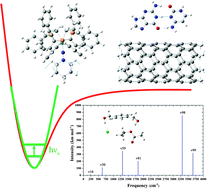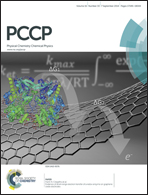PICVib: an accurate, fast and simple procedure to investigate selected vibrational modes and evaluate infrared intensities†
Abstract
The generalization of the PICVib approach [M. V. P. dos Santos et al., J. Comput. Chem., 2013, 34, 611] for calculating infrared intensities is shown to be successful and to preserve all interesting features of the procedure such as easiness of implementation and parallelization, flexibility, treatment of large systems and at high theoretical levels. It was tested and validated for very diverse molecular systems: XH3 (D3h), YH4 (D4h), conformers of RDX, SN2 and E2 reaction product complexes, the [W(dppe)2(NNC5H10)] complex, carbon nanotubes, and hydrogen-bonded complexes (H2O⋯HOH, MeHO⋯HOH, MeOH⋯OH2, MeOH⋯OHMe) including the guanine–cytosine pair. The PICVib shows an excellent overall performance for calculating infrared intensities of localized normal modes and even mixed vibrations, whereas care must be taken for vibrations involving intermolecular interactions. DFT functionals are still the best combination with high level ab initio methods such as CCSD and CCSD(T).


 Please wait while we load your content...
Please wait while we load your content...